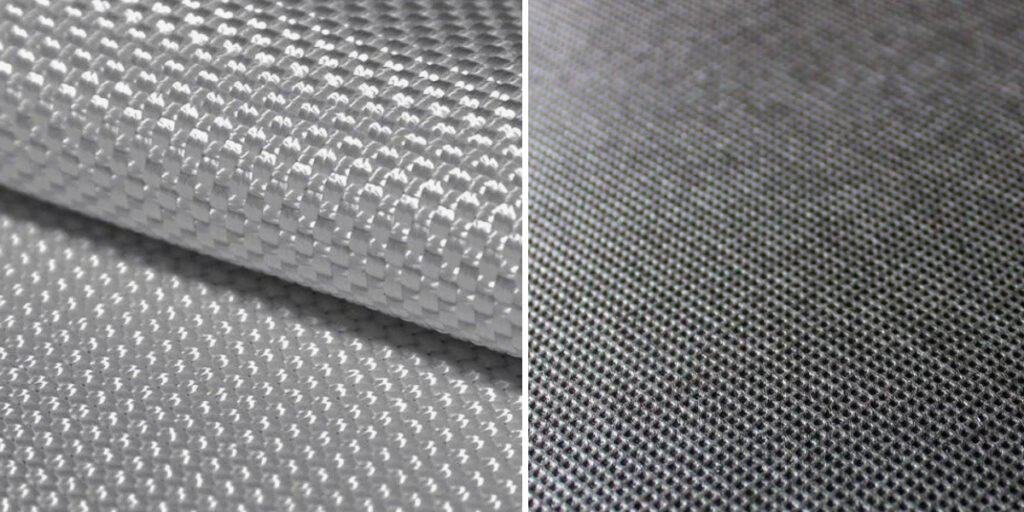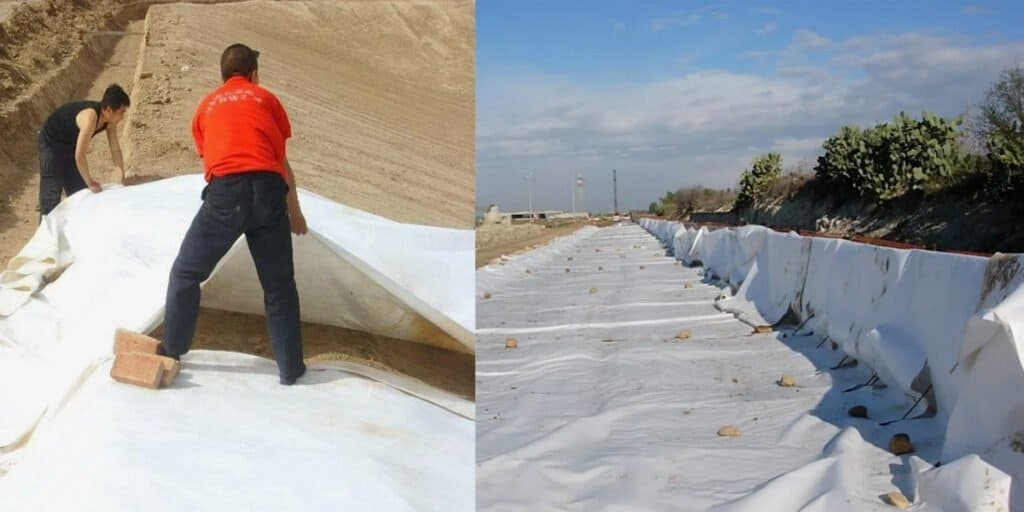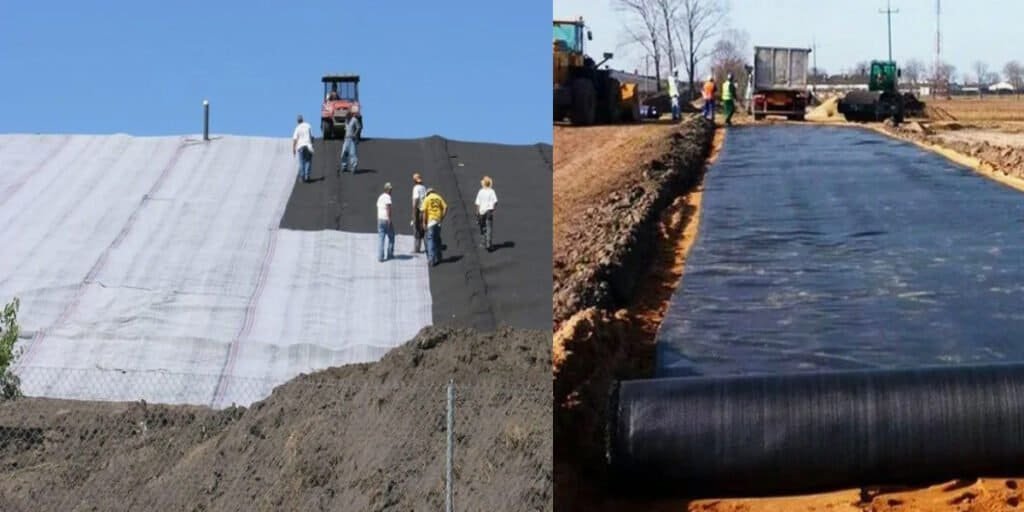Woven geotextile is a geosynthetic material made of high-strength fibers through a weaving process. It has a wide range of applications in civil engineering projects that require high tensile strength and durability. The types, uses and advantages of woven geotextiles will be introduced in detail to help you better understand and choose the woven geotextile suitable for your project.
Overview of woven geotextile
Woven geotextile is a geosynthetic material made of polyester (PET), polypropylene (PP) or other high-strength fibers through a weaving process. This material has excellent physical and chemical properties and is widely used in various civil engineering projects. The main features of woven geotextiles are their high strength, corrosion resistance and good filtration performance.

Types of woven geotextiles;
Depending on different application requirements and material properties, woven geotextiles can be divided into many types. Here are some common types of woven geotextiles:
- Classification by material
Polyester (PET) woven geotextile: - Features: high strength, corrosion resistance, and aging resistance.
Applications: road construction, railway construction, dam protection, slope reinforcement, etc.
Polypropylene (PP) woven geotextile: - Features: light weight, good flexibility, and low cost.
Applications: temporary projects, landscaping, drainage systems, etc.
Nylon woven geotextile: - Features: good wear resistance and high tear strength.
Applications: civil engineering in special environments, such as mines, industrial areas, etc.
Uses of Woven Geotextiles;
- Road construction; roadbed reinforcement and paving to improve the bearing capacity and stability of the roadbed and reduce uneven settlement.
Isolation layer: prevent different types of soil or materials from mixing with each other and maintain the stability of the roadbed.
Drainage system: as a drainage channel, it helps to remove excess water and reduce the impact of water pressure on the roadbed. - Railway construction; the isolation layer under the track bed prevents soil particles from entering the ballast layer and maintains the stability of the track foundation.
Slope reinforcement: used for the reinforcement of railway slopes to prevent landslides and erosion. - Embankments and revetments; anti-erosion strengthens embankment and revetment structures to prevent soil and water loss.
Isolation layer: prevent different types of soil or materials from mixing with each other and maintain the stability of the structure. - Slope protection; slope reinforcement paving fills soil and compacts it to prevent soil particles from sliding and enhance the stability of the slope.
Vegetation cover: promotes plant growth while providing soil protection. - Landfills; as part of the impermeable layer, prevents pollutants from seeping into groundwater.
Isolation layer: prevents different types of garbage from mixing with each other and maintains the stability of the landfill. - Landscaping; vegetation cover: promotes plant growth while providing soil protection.
Drainage system: acts as a drainage channel to help remove excess water and maintain the appropriate moisture of the soil.
Water conservancy project; channel lining prevents soil erosion and maintains the stability of the channel.
Reservoir bottom anti-seepage: as part of the anti-seepage layer, prevents water from penetrating.


Advantages;
- High tensile strength: Woven geotextiles have extremely high tensile strength and can withstand greater stress.
- High tear strength: They can maintain good integrity even in harsh environments.
- Corrosion resistance; chemical corrosion resistance: Woven geotextile materials (such as PET, PP) have good chemical corrosion resistance and can be used for a long time in acid and alkaline environments.
- Biological corrosion resistance: Not easily eroded by microorganisms, extending the service life.
- Aging resistance; UV resistance: The material has excellent UV resistance and can maintain stable performance for a long time in outdoor environments.
- Anti-oxidation: Not easy to oxidize, extending the service life.
- Good filtration performance
Good permeability: Allows water to pass freely while preventing soil particles from being lost and maintaining the integrity of the soil. - Good filtration effect: Effectively separates soil particles of different particle sizes and prevents fine particles from entering the drainage system.
- Flexibility; Easy to lay: The material is soft and easy to lay, and can adapt to various terrains and irregular surfaces.
- Easy to transport: Light and easy to carry, reducing transportation costs.
- Environmentally friendly; Recyclable: The material is recyclable and has little impact on the environment.
No pollution: less waste is generated during the production process, which is environmentally friendly. - Multifunctionality; wide application: suitable for a variety of engineering fields, with wide applicability.
Multifunctional role: it can play the role of isolation and filtration, as well as reinforcement and drainage.
Working Principle;
- Isolation; Separation of different materials: Woven geotextiles can effectively separate different types of soil or materials, preventing them from mixing with each other, thereby maintaining the stability of the structure.
Preventing soil loss: In road construction and dam protection, woven geotextiles can prevent the loss of soil particles and maintain the integrity of the structure. - Filtration; Woven geotextiles have good permeability and allow water to pass freely.
Preventing soil particles: At the same time, woven geotextiles can prevent the loss of soil particles and maintain the integrity of the soil. - Reinforcement; Enhance bearing capacity: Through its high strength characteristics, woven geotextiles can enhance the bearing capacity of the soil and improve the stability of the overall structure.
Reducing uneven settlement: In roadbed reinforcement and slope protection, woven geotextiles can significantly reduce uneven settlement and improve the stability of the project.
Drainage; Woven geotextiles can serve as drainage channels to help remove excess water and reduce the impact of water pressure on the structure.
Keep dry: In water conservancy projects and landfills, woven geotextiles can keep the soil dry and prevent water penetration.
Woven geotextiles are highly efficient geosynthetics and play an important role in civil engineering projects. Their high strength, corrosion resistance, aging resistance, good filtration performance and flexibility make them an ideal choice for many projects. By properly selecting and installing woven geotextiles, the quality and durability of the project can be significantly improved, the environment can be protected, and sustainable development can be achieved.
Contact Us
If you have any questions about woven geotextiles or need further information, please feel free to contact us. Our professional team will provide you with detailed technical support and solutions.






